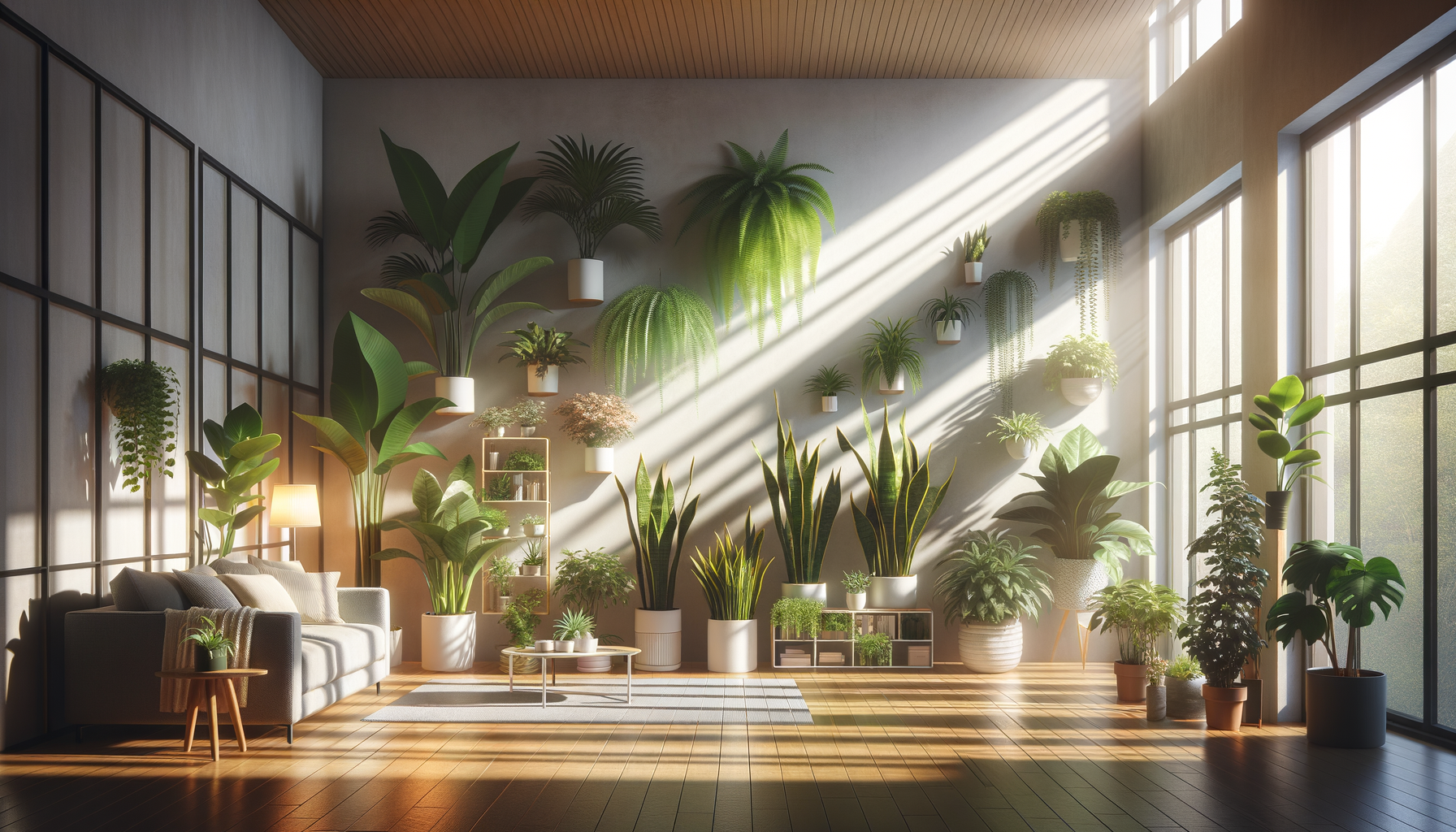Improved Air Quality
One of the most significant benefits of having house plants is their ability to improve indoor air quality. Plants naturally absorb carbon dioxide and release oxygen through the process of photosynthesis. This exchange can help to create a fresher atmosphere in your home. Moreover, certain species of house plants, such as spider plants, peace lilies, and snake plants, are particularly effective at removing toxins like formaldehyde, benzene, and trichloroethylene from the air.
The NASA Clean Air Study famously highlighted the air-purifying qualities of house plants, suggesting that they can help reduce indoor air pollution. In urban environments where air quality can be compromised, house plants act as natural air filters, making your living space healthier.
Additionally, plants can increase humidity levels by releasing moisture vapor during transpiration. This can be particularly beneficial in dry climates or during winter months when indoor heating reduces humidity levels. Improved humidity can alleviate dry skin, sore throats, and respiratory issues.
Boosting Mental Health
House plants are not just decorative; they can also have a profound impact on your mental well-being. Studies have shown that interacting with plants can reduce stress, anxiety, and depression. The act of caring for plants, such as watering and pruning, can be meditative and calming, providing a sense of purpose and routine.
Having greenery around can also improve mood and increase feelings of happiness. The presence of plants has been linked to lower blood pressure and reduced levels of cortisol, the stress hormone. This makes house plants a valuable addition to homes, especially for those who work long hours indoors or in high-stress environments.
Moreover, exposure to natural elements, even in the form of indoor plants, can enhance concentration and productivity. This is particularly relevant in home office settings, where house plants can create a more pleasant and motivating work environment.
Enhancing Aesthetic Appeal
House plants are a versatile and cost-effective way to enhance the aesthetic appeal of any room. They come in various shapes, sizes, and colors, allowing for creative expression and customization of your living space. Whether you prefer the lush foliage of a fiddle-leaf fig or the vibrant blooms of an orchid, there is a plant to suit every style and preference.
Plants can be used to create focal points, add texture, and complement existing decor. They can be placed in pots, hung from ceilings, or arranged in terrariums to create a visually pleasing environment. The presence of greenery can soften harsh lines and add a touch of nature to modern interiors.
Furthermore, house plants can be used to create a sense of harmony and balance in a room. The principles of biophilic design emphasize the importance of incorporating natural elements into built environments to promote well-being and connection to nature.
Supporting Environmental Sustainability
Incorporating house plants into your home can contribute to environmental sustainability. Plants play a crucial role in the carbon cycle, absorbing carbon dioxide and releasing oxygen, which helps mitigate the effects of climate change. By maintaining house plants, individuals can contribute to reducing their carbon footprint.
Additionally, growing your own herbs and small vegetables indoors can reduce reliance on store-bought produce, which often involves significant energy consumption for transportation and packaging. This practice can promote a more sustainable lifestyle and encourage self-sufficiency.
House plants also support biodiversity by providing habitats for beneficial insects like bees and butterflies. While this is more applicable to outdoor gardens, certain indoor plants can attract and support these creatures, contributing to the health of the local ecosystem.
Creating a Calming Atmosphere
House plants are known for their ability to create a calming and soothing atmosphere. The presence of greenery can evoke feelings of tranquility and relaxation, making your home a sanctuary from the hustle and bustle of daily life. This is particularly important in urban settings where access to nature may be limited.
The visual appeal of plants, with their varying textures and colors, can have a therapeutic effect, reducing mental fatigue and promoting relaxation. The act of tending to plants can also be a mindful practice, encouraging individuals to slow down and appreciate the present moment.
Incorporating house plants into spaces such as bedrooms and living areas can enhance the overall ambiance, making these areas more inviting and comfortable. The calming effect of plants can improve sleep quality and create a more peaceful environment conducive to rest and rejuvenation.




Leave a Reply